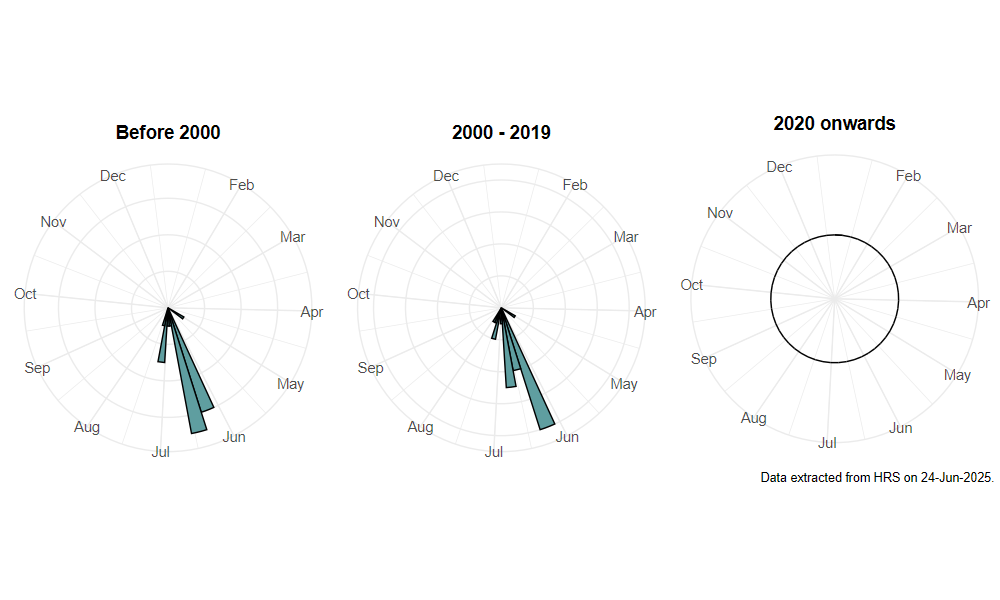Platycheirus amplus Curran, 1927
Identification
Identification difficulty = 4. ![]()
![]() according to Ball & Morris, 20241
according to Ball & Morris, 20241
Biology
The genus Platycheirus comprises a range of aphid-feeding predators, many of which are associated with aphids on sedges Carex sp. The precise ecology of P. amplus is unknown. Adults have been found in wet situations including poor fen, wet meadows and moorland flushes. Most records are dated June or July.
Flight period
The following plots show the number of unique records per week excluding those reported to be of immature stages.

Status
Lower Risk (Near Threatened) - Ball & Morris, 20142.
Distribution
Originally described as a North Amerocan species, it was found in northern Europe and added to the British list by Speight & Vockeroth (1988)3. Upland areas of Scotland and northern England. The few records show a strong preference for altitudes around 200 - 300m. The two English records appear to be in upland situations and are based on males.

-
Ball, S., & Morris, R. (2024). Hoverflies of Britain and Ireland. WILDGuides (3rd ed.). Oxford: Princeton University Press. ↩
-
Ball, S., & Morris, R. (2014). A review of the scarce and threatened flies of Great Britain. Part 6: Syrphidae. ( No. 9). Species status (pp. 1–130). Peterborough: JNCC. ↩
-
Speight, M., & Vockeroth, J. (1988). Platycheirus amplus: an insect new to Ireland not previously recorded from Europe (Diptera, Syrphidae). Irish Naturalists’ Journal, 22, 518–521. ↩